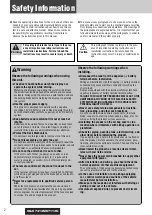
Expansion Stages and System Capacity
51
Mitel SMB Controller
syd-0657/2.0 – R6.0 – 09.2018
the resources of the communications server, which means the system can be ex-
panded step by step in line with requirements.
3. 3. 1. 1
DSP modules
Processor-intensive system functions require media resources. The communication
server’s DSP capacity increases through the use of DSP modules.
Fig. 8
Design of the DSP module
DSP modules are stacked on the DSP slot on the mainboard (see Fig. 7) and do not
take up any slots for interface cards (see "Fitting DSP modules", page 103). The differ-
ent types of modules can be used as a mix.
Tab. 17
DSP modules
Note
Do not use the older DSP modules of type SM-DSP1 and SM-DSP2 as these modules are not
supported with Mitel SMB Controller.
Allocatable functions
One or more functions can be allocated to the individual DSP chips on the DSP mod-
ules. For this the DSP chips have to be loaded with different firmware. The additional
media resources can be used for DECT telephony, Voice over IP, fax transmissions,
audio services or integrated mobile/external phones. This means that for each DSP
chip a specific number of channels is available for the corresponding functions. Some
of these functions are subject to a licence (see also "Licences", page 67).
Functions are allocated in WebAdminin the
Media resources
(
=ym
) view.
•
DECT
Operation of a DECT system on DSI interfaces with cordless phones. The voice
Type
Number of DSP chips per module
Max. number of modules per system
SM-DSPX1
1
3
SM-DSPX2
2















































